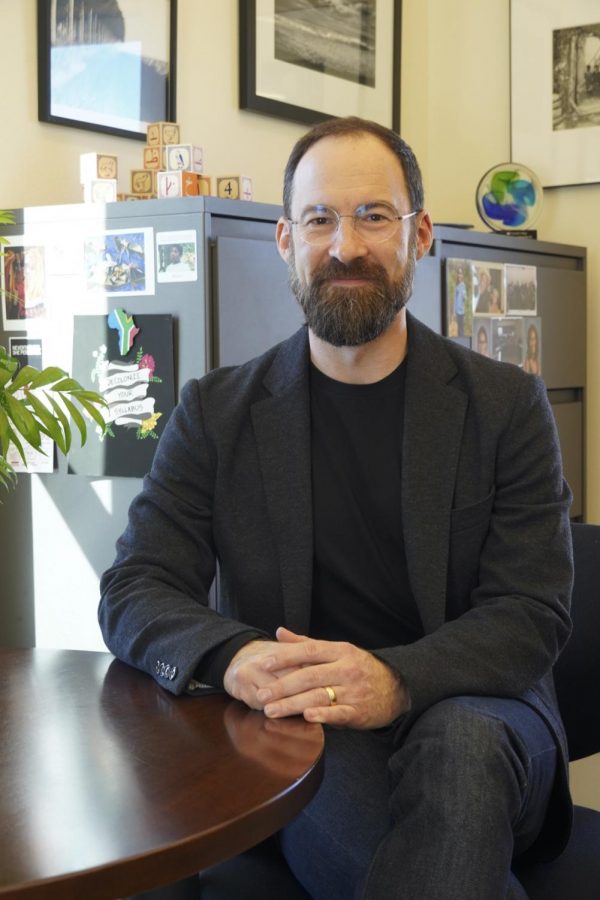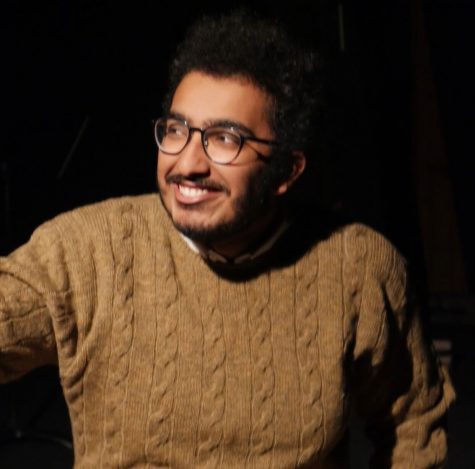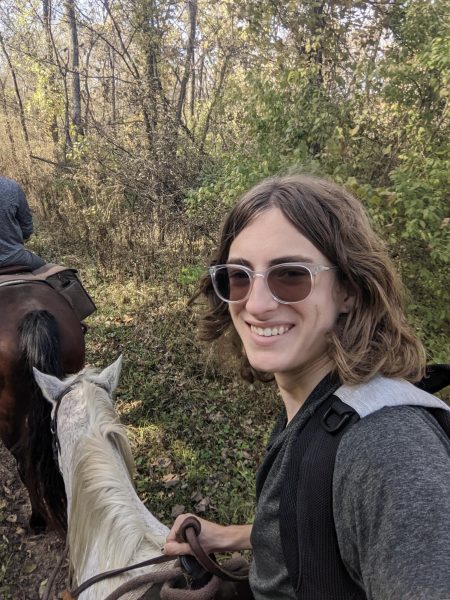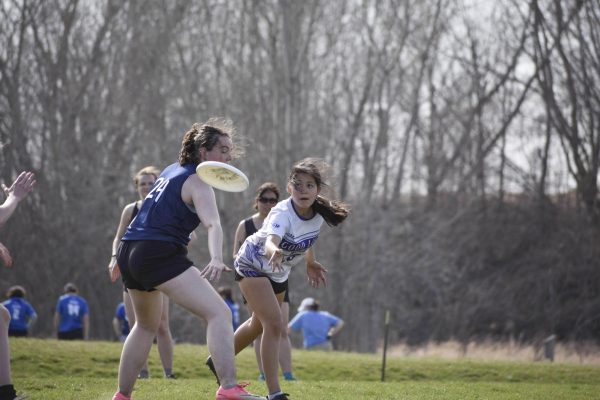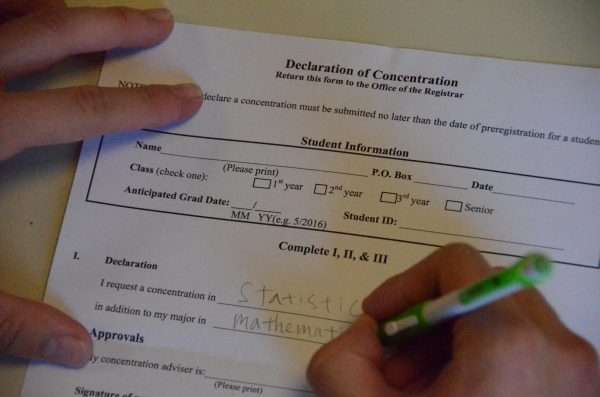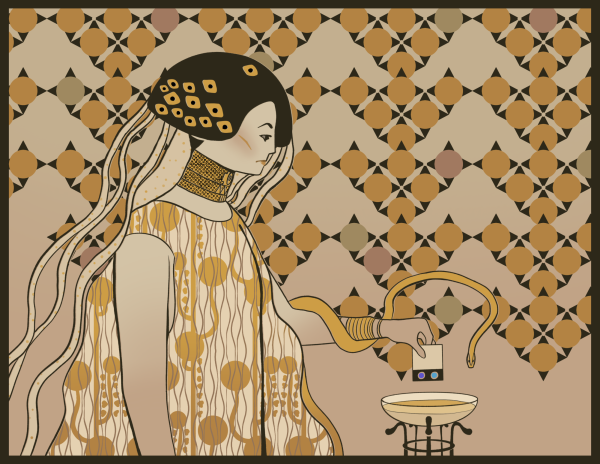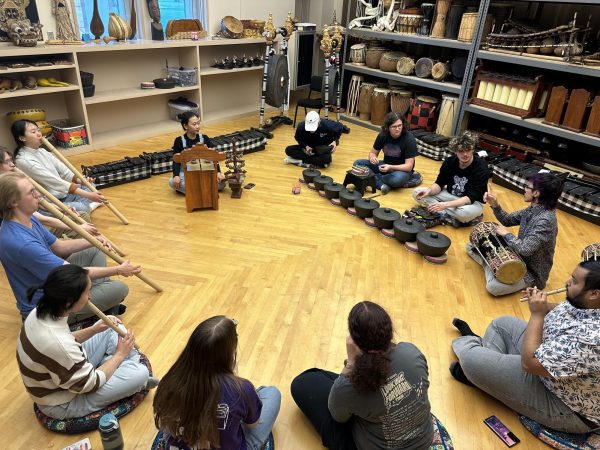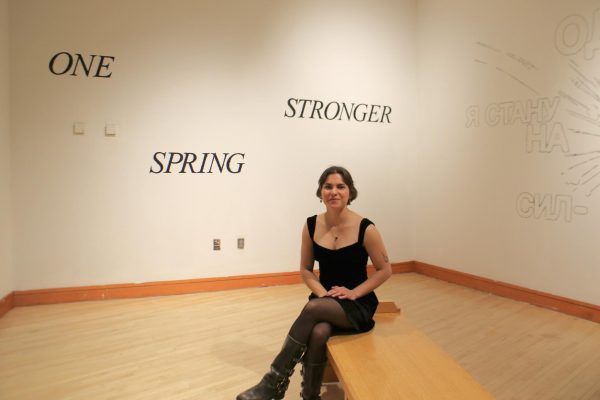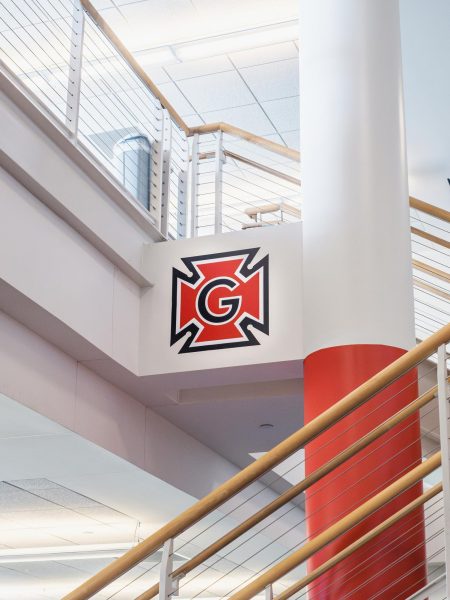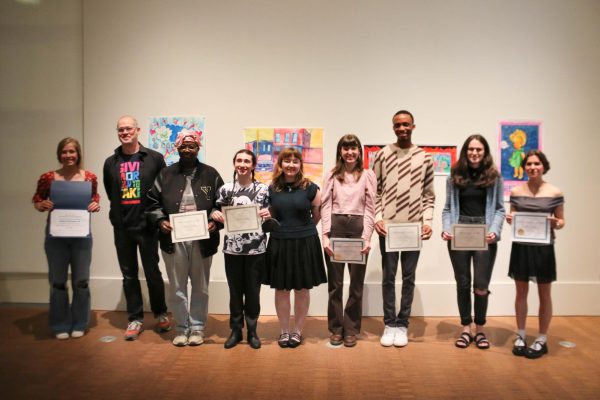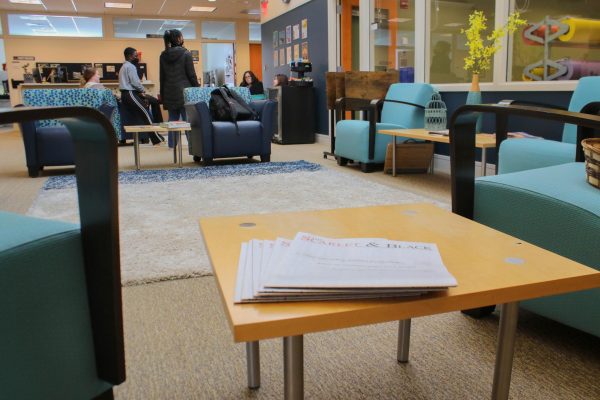Office Hours: Caleb Elfenbein, Religious Studies & History
Caleb Elfenbien rocking a fabulous outfit.
March 13, 2023
In Office Hours, Raffay Piracha `25 sits down with faculty to learn how their scholarship provides them with equipment for living
I tend to wince when people say they “aren’t religious.” There’s a lot to say about how we define religion — most of the time, we mean membership in an organized group or worship space, reading from some curriculum or embodying a public identity. But to me, religiosity is everywhere — it’s in the private habits we inherit and reproduce to better our well-being (e.g. showering), it manifests as public ritual (like attending church, grand openings and concerts) and it presents especially in the unique and routine observation of cultural norms (like driving on the road and not the sidewalk).
One of my more visible regiments is the curation and collection of sweaters — I adore an oversized cable-knit that feels like a blanket and looks like a work of art. A diagram of various cable stitches and their origins in the Aran islands is plastered on my dorm room wall — one might say I am “religiously” into sweaters.
But in the same way that some don’t claim (or even reject) religion, not all of us say we like fashion — yet we miraculously appear clothed in public spaces every day. This week, I’m treading into religious studies to complicate my idea of fashion and think just a little about how, through clothing, private rituals interplay with public life.
I think a lot of us have our favorite dressers on campus, and one of mine is Caleb Elfenbein. At the confluence of loving woven blazers and designer sneakers, Elfenbein has both mastered the art of dressing classically professorial and — on more relaxed days — elegantly modern. Crucially, Dr. Elfenbein is a history and religious studies professor with a current (and apt) focus on the nature of cultural habits.
So to better understand the private underpinnings of his wardrobe, I asked Caleb Elfenbein to reflect with me on the habit of curating fashion.
***
The word on the street is that you started wearing ties because you didn’t want to be conflated with other students at your first teaching gig. Is that a myth?
Not a myth. My first teaching job was the year after I graduated from college. My senior year, I had gone to a local community college for all my classes. I really didn’t like high school and was a super mediocre student until that year. And I realized, oh, I actually really like learning. I had such an amazing experience that year and developed lifelong relationships with my teachers there. They were in a super pinch and asked me if I wanted to come back and teach a section of American politics. I was younger than most of the students in the class, which was an amazing experience. I’m so glad my first teaching experience was at a community college, but I really felt like I needed to dress very professionally to be taken somewhat seriously in the classroom. Over time, I started thinking about the way that I dress when I’m in a particular professional space as a way that I communicate the seriousness with which I take the task at hand. Being in a small town, living basically on campus, and having so much of my life here, dressing differently for work helps me have some boundaries in my life. And that’s just very helpful for me. So the ritual of getting dressed in the morning, I really love.
Would you say this is your favorite ritual?
I don’t think it’s my favorite ritual. I do like it a lot, it’s up there. In part because as I’m doing it I’m thinking about what I’m doing during the day, and it is helping me make decisions. It means that I’m trying to enter the day with some intention, like how am I going to move through this day and how does the way that I’m presenting myself reflect how I think about my role in this day? The pandemic changed that a little bit. I used to wear a shirt and tie — don’t do that anymore. One recent thing is that I really love sneakers. I don’t know why that happened.
Did you skip over them in your adolescence?
I would say the only really special pair of sneakers I had, and they were special in part because, growing up with a single mother, [I knew] what she had to do to afford Jordans when I was 13. That would have been 1989, so they were pretty new at that point. And so they felt really special. But I didn’t go down the sneaker path until, I don’t know, a couple years ago I saw a pair of Jordans and I was like, they’re just so beautiful. And so that’s kind of what started it and I’ve gone down that path a little bit. I think for me, part of it is ritual. Like, I love cleaning sneakers, taking care of them. I think, again with some ambivalence around liking things, I think taking really good care of things is one way I reconciled myself to the fact that I like things.
Yes, for me, liking things is just utterly embarrassing, and I’m trying to work on that.
It’s a little embarrassing. Admitting that I really like sneakers. I spend time looking at sneakers, it has been embarrassing to me because liking things can bleed into excess really easily.
Yes, and a lot of people, me included, sometimes pretend to not care.
I think a lot of people care. Being able to be honest, and maybe a little critical of our own consumption practices is probably good. Part of it, for me too, is middle age and how do I want to move through the aging process? What does it mean to age gracefully? But I’ll also admit to doing some research on how you can continue to present yourself in a way that connects with things that are current without being the old guy that dresses like a teenager? So I admit to doing that kind of research. Part of the sneaker thing, for me, is this moment in life where I’m kind of imagining what does it means to be a middle-aged man right now?




























































